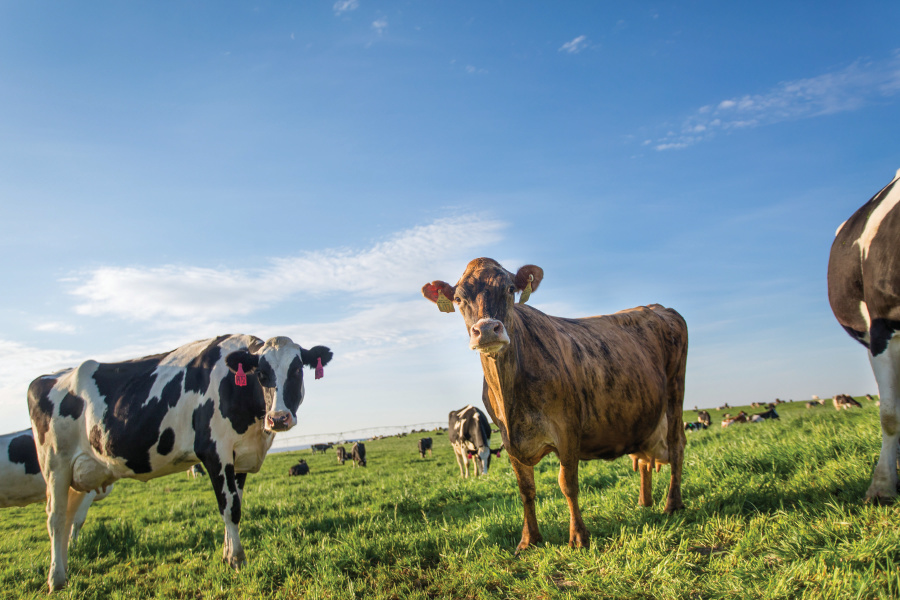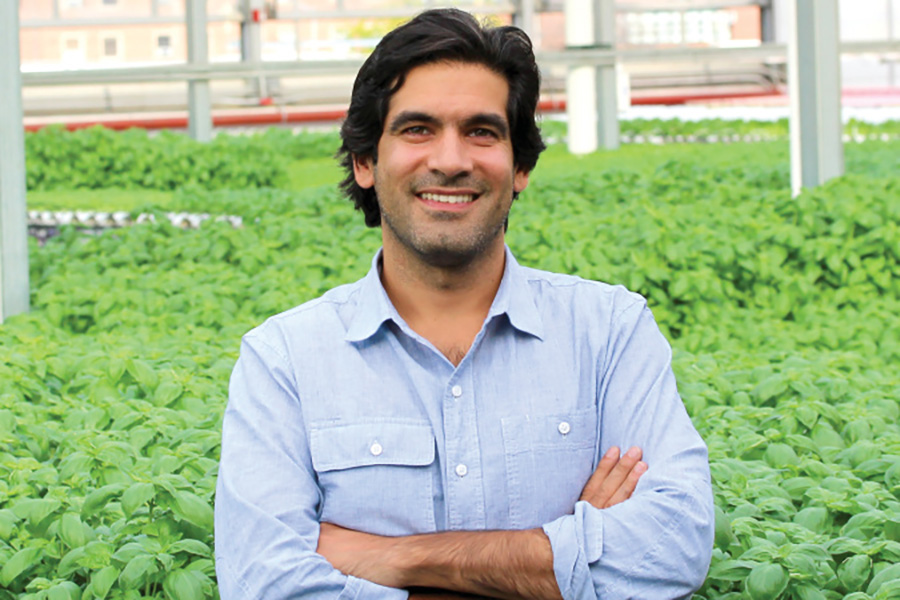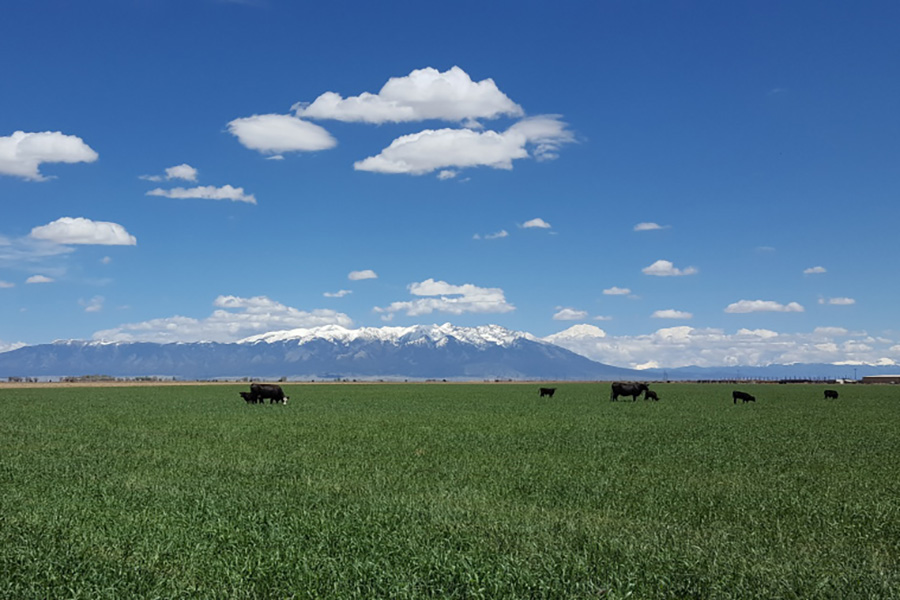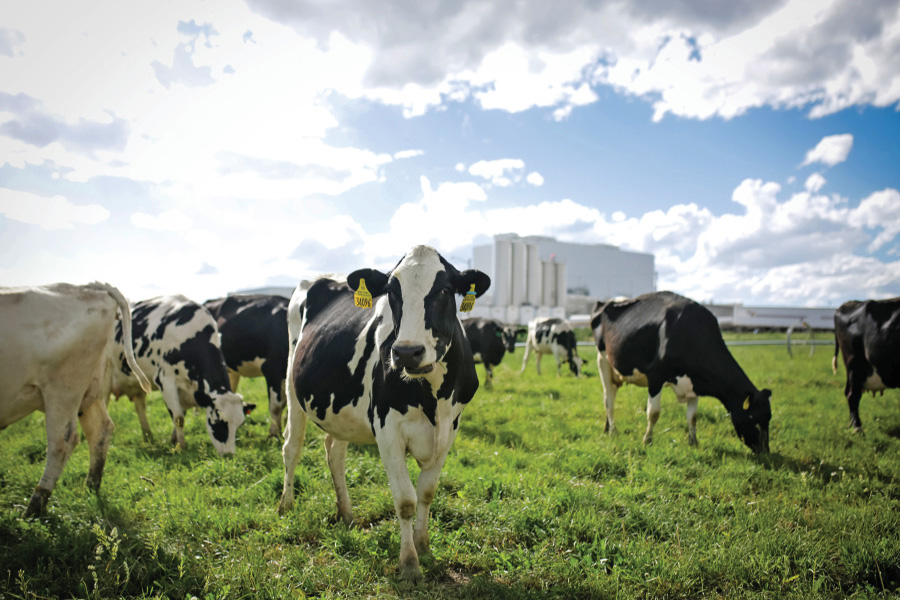Home > Colorado > Colorado Farmers Lead on Climate-Smart Agriculture
Colorado Farmers Lead on Climate-Smart Agriculture
In partnership with: Colorado Department of Agriculture

Climate and farming can’t be separated, positioning the agricultural community at the forefront of the fight for a sustainable, climate-smart future. Farmers in Colorado are creating trailblazing environmental stewardship opportunities that support natural resources and yield productive returns.
High-Tech Greenhouses
Climate-smart innovators like Gotham Greens are bringing fresh solutions to food production. The company is reimagining urban landscapes and empowering its farmers with complete environmental control inside sun- and wind-powered buildings. The indoor farming company boasts the largest network of high-tech, climate-controlled hydroponic greenhouses nationwide, including a greenhouse in the Denver Metro area.

Co-founder and CEO Viraj Puri says there are substantial benefits to this type of unconventional farming.
“Our expert farmers work with ideal conditions for plants to thrive, resulting in consistent, reliable yields of nutrient-dense and long-lasting produce,” Puri says, which adds to the productivity, nutrition and energy advantages. “Our unique greenhouse technology enables us to conserve 300 acres of land and 270 million gallons of water annually compared to conventional farming.”

Understanding the challenges that open-field farming faces, Gotham Greens sees a bright and promising future for the greenhouse-grown produce category. Recently, the organization earned recognition as a Certified B Corp, joining the ranks of vetted companies that demonstrate the highest measure of social and environmental impact.
“When we first started the company, we began with smaller footprints to prove the concept,” Puri says. “We’ve expanded our presence in response to overwhelming consumer and retail demand. Each new greenhouse project brings us closer toward achieving our sustainability goals.”
See more: How Colorado’s Southern Ute Community Is Working to Ensure Access to Healthy Foods
Soil Health Solutions

Unlike hydroponic farming, open-field farming relies on healthy soil to maximize yield and product quality.
Erin Nissen, a fourth-generation potato grower and farm manager at Nissen Farms in Mosca, in the San Luis Valley, says her family changed operational practices for the better.
“The biggest change we made was six years ago – we split our fields into thirds, and we farm each of them separately, which helps to fight microscopic pests among other things,” Nissen says.
The farm’s cover crop rotates each year, and Nissen says this strategy helps conserve the water pumped on each crop circle.
“Everything we do is water-driven,” she says.
Access to groundwater in the San Luis Valley is dwindling, and farmers like Nissen are working to recharge the depleted unconfined aquifer beneath the valley’s main surface water system, the Rio Grande River.

“On top of our progress in conserving water, all of our soil health practices have really helped our yield and quality rates,” she says. “We’re actually selling more potatoes than ever on fewer acres. That’s a good change for us.”
Nissen isn’t alone in harvesting abundance out of changing soil health practices. The Colorado Department of Agriculture funds soil health programs across the state to help producers improve their land and bottom lines.
Third-generation farmer Roy Pfaltzgraff of Pfaltzgraff Farms in Haxtun, on Colorado’s Northeastern Plains, says there are unprecedented advantages to his evolved practices in regenerative farming.
“The land is paying us back because of the way we’ve taken care of it,” Pfaltzgraff says. “Average organic matter in this area is about 1%. The average for many of our fields is 2% to 2.5%.”
When Pfaltzgraff took over the family’s no-till farming operation, his specialty crop experimentation and meticulous analysis of farm activity led to a discovery.
“By increasing our diversity of plants we are changing plant exudates,” Pfaltzgraff says. “That diversity is feeding more microbes. When you start feeding these microbes, they start producing nutrients that greatly improve soil health.”
It’s this unusual but beneficial finding that Pfaltzgraff says produced another desirable outcome.
“We have tripled our annual average gross revenue,” he says.
See more: Behind the Scenes of Colorado’s Soil Health Efforts
Greenhouse Gas Reduction

Introducing renewable energy into ag production is another way Colorado is encouraging producers to reduce the state’s greenhouse gas emissions. The Colorado Department of Agriculture works with the Colorado Energy Office to provide energy audits and recommendations to producers looking to improve the energy efficiency of their operations.
Aurora Organic Dairy distributes its organic milk nationwide and operates two farms in Colorado that promote and enhance soil health through a holistic ecosystem approach to organic farming.
In addition to participating in a Joint Institute for Strategic Energy Analysis study on methane digestion, the organization’s sustainability manager, Candice Stacey, says the dairy company is farming in new ways.
“We’ve reduced our greenhouse gas emissions by investing in third-party carbon reduction and renewable energy projects and have installed solar arrays at our High Plains and High Ridge Dairies in Colorado. We have an agreement with our local electric utility whereby we sell the renewable energy certificates (RECs) we generate on-site and, in exchange, purchase ‘replacement RECs’ to cover the electricity we generate with our solar arrays,” Stacey says. “We also support innovation in organic feed additives that reduce enteric methane emissions. We’re always looking for ways to improve our sustainability performance.”
CDA also has programs available to help producers reduce their GHG emissions through the use of agrivoltaics, anaerobic digesters and other energy efficiency programs. The Department also launched the Agricultural Drought & Climate Resilience Office to provide assistance to farmers and ranchers looking to increase their climate resilience practices.
See more: How Mad Agriculture and Origin Milk Are Changing Dairy, One Guernsey Cow at a Time




Appreciate your work on this!